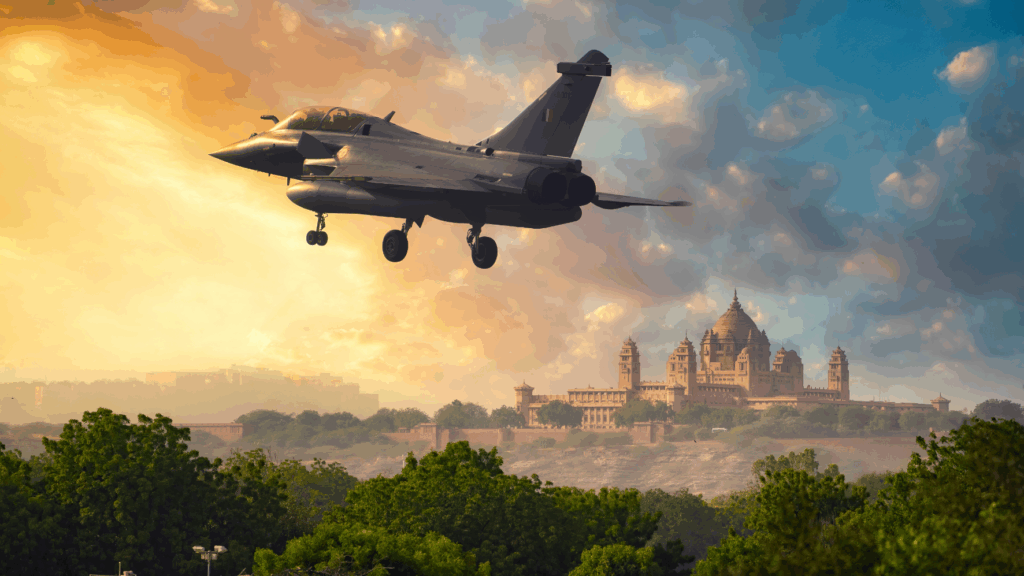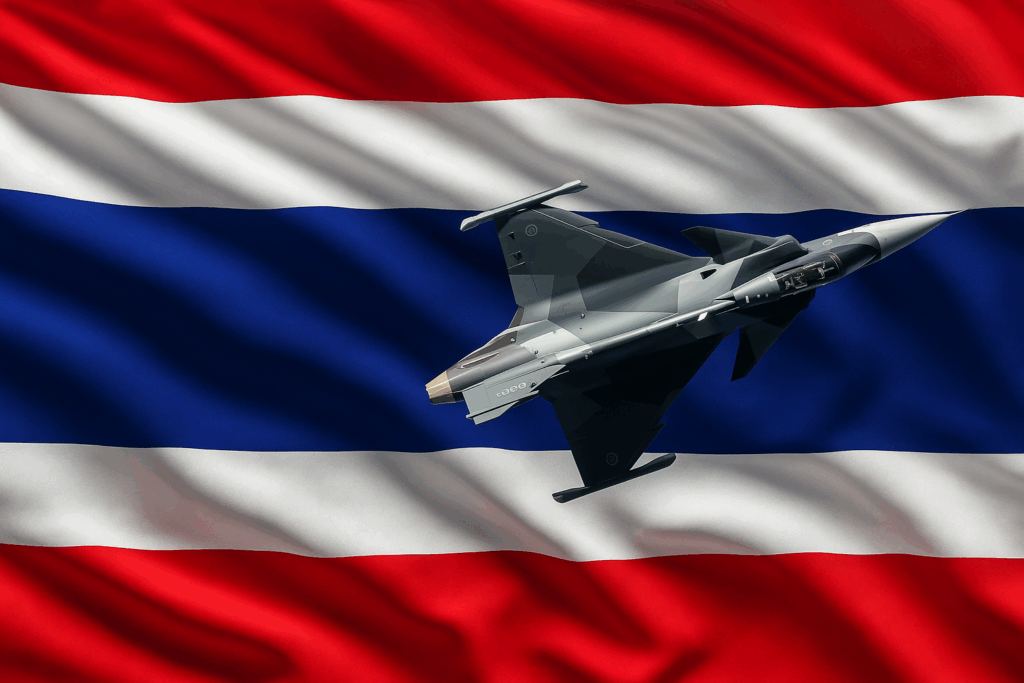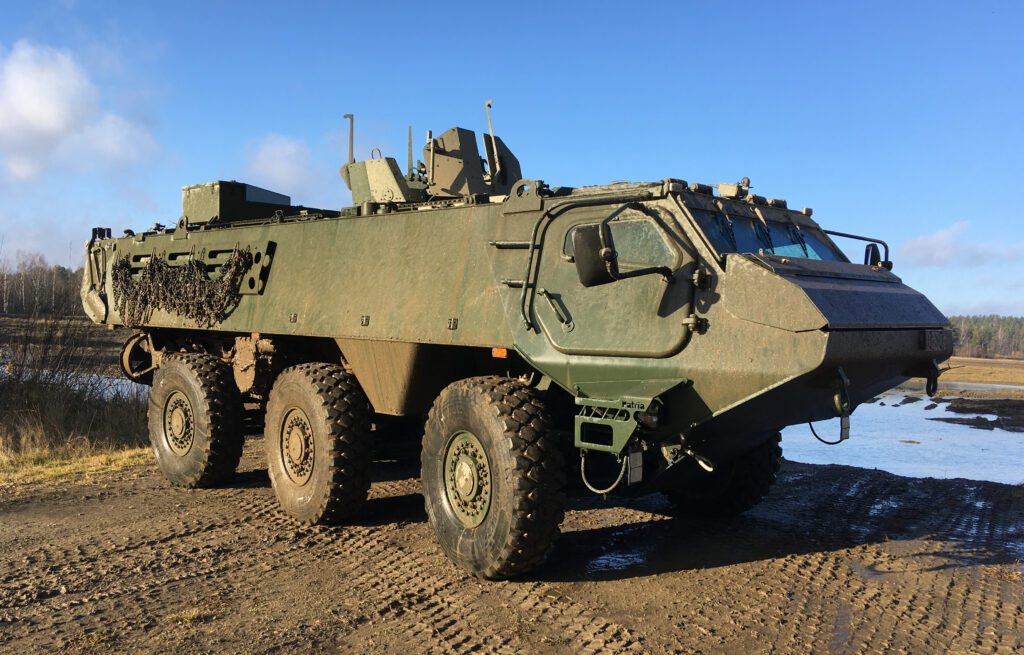Thailand is modernising its air defences by selecting the Saab Gripen E/F fighter jet as the next cornerstone of the Royal Thai Air Force (RTAF). Thailand’s renewed interest in the Gripen signals a desire for strategic flexibility in a region increasingly defined by Sino-American competition. India is also weighing Saab as one of the contenders in its 114-aircraft Multi-Role Fighter Aircraft (MRFA) competition.
The decision to procure the Gripen E/F follows an exhaustive evaluation of several contenders, including the F-16V Viper and China’s Chengdu J-10. Thailand already operates earlier Gripen C/D models, making the E/F a natural evolution for fleet commonality and logistics. Under the deal announced in June 2025, an initial batch of 12 Gripen E single-seat jets and 2 two-seat Gripen F trainers will be delivered over the coming years, alongside extensive training, maintenance support and local industrial participation.
The Gripen E/F is a significant leap from earlier models. Upgraded with the General Electric F414G engine, advanced AESA radar, and a new electronic warfare suite, it is designed to match 4.5-generation fighters in contested airspaces. It supports integration with Meteor beyond-visual-range missiles and is built for rapid turnaround on improvised airstrips — a legacy of Swedish Cold War doctrine that aligns well with Thailand’s decentralised defence infrastructure.
Reducing Risks
Thailand’s choice reflects both operational and industrial factors. The deal includes technology transfers for maintenance and assembly, fostering the domestic defence industry. Politically, the Gripen’s non-US origin reduces the risk of export-licence complications, while offering interoperability with existing Western-supplied systems.
The Gripen suits Thailand’s emphasis on short-field operability, fast reaction capability, and affordable deterrence. This fleet expansion could also bolster joint operations with Sweden or other Western-aligned forces in the Indo-Pacific, without risking dependence on the US Foreign Military Sales framework.
Furthermore, the deal may involve expanded industrial cooperation, giving Thailand access to technical training, systems integration, and potentially even localised maintenance infrastructure, all of which contribute to national defence sovereignty — a priority for many mid-tier military powers.
Reviving India Campaign

In February, ahead of Aero India 2025 in Bangalore, Sweden’s Saab intensified its push to supply the Indian Air Force (IAF) with the JAS 39 Gripen E/F, offering full-scale production in India—including airframes, systems, and software. The proposal includes a clear roadmap for rapid localisation and long-term technology transfer.
The Gripen offer ties into India’s ambitions to become a global defence export hub. Saab has pledged not only local assembly but also support for indigenous programmes like the Light Combat Aircraft (LCA) and the future Advanced Medium Combat Aircraft (AMCA).
India’s 114-aircraft Multi-Role Fighter Aircraft (MRFA) tender, launched in 2018, has drawn bids from Boeing’s F-15EX, Lockheed Martin’s F-21, Dassault’s Rafale, Eurofighter Typhoon, MiG-35, Su-35—and Saab’s Gripen E/F.
Technically, the Gripen features a delta wing and canard layout, fly-by-wire controls, and a relaxed stability design. The first Gripen flew in 1988, entered Swedish service in 1996, and the latest E/F variant joined Swedish and Brazilian inventories in 2019. It stands out by offering full access to source code and technical documentation, allowing India to modify and upgrade the jet independently.
Armed with the Meteor beyond-visual-range missile, the single-engine Gripen E is among the most modern fighters in the MRFA race, promising affordability, autonomy, and cutting-edge capability.
SAAB Gripen E/F: Pros & Cons
Pros
- Operational Flexibility: STOL capability and minimal ground support requirements suit dispersed basing — valuable in any conflict involving Thailand’s jungle and mountainous geography.
- Electronic Warfare: Among the best in its class, including jamming and radar spoofing capabilities.
- Lifecycle Cost: Lower operating cost per flight hour than Eurofighter or F-35.
- Western Tech without US Strings: Maintains NATO compatibility but avoids US-centric export restrictions.
Cons
- Single Engine: A liability in overwater operations or extended range missions.
- Limited Stealth: No low observable design, unlike the F-35.
- Smaller Payload: Carries fewer munitions than heavier platforms like the F-15EX.
- Niche User Base: Fewer operators may mean higher long-term sustainment costs.
Technical Overview of the Gripen E/F
The Gripen E/F represents a substantial upgrade over its predecessors. Key specifications:
- Engine: General Electric F414G turbofan
- Thrust: 98 kN (afterburner)
- Maximum Speed: Mach 2.0 (~2,100 km/h)
- Combat Radius: ~1,500 km
- Service Ceiling: 15,240 m
- Payload: 10 external hardpoints, up to 7,200 kg of weapons
- Fuel Capacity: Internal ~4,360 L; total with tanks ~8,895 L
- Avionics: ES-05 Raven AESA radar, advanced IRST sensor, integrated electronic warfare suite
- Unit Cost: ~USD 85 million
Advanced datalinks and sensor-fusion systems enable the Gripen to operate as both shooter and sensor node, integrating seamlessly into Thailand’s existing command-and-control networks. Its short-field performance and rapid sortie generation suit operations from dispersed or austere airstrips, a valuable trait for national defence and humanitarian missions alike.
Gripen E vs the Rest
In comparison to the F-16V and J-10C—both competitors in Thailand’s earlier assessments—the Gripen E offers a more modern radar and electronic warfare suite, as well as superior networked operations capabilities. While the F-35A boasts stealth and greater internal payload, its higher acquisition and lifecycle costs place it beyond many medium-sized air forces’ budgets.
| Aircraft | Engine(s) | Thrust (max) | Max Speed | Combat Radius | Radar | Payload | Unit Cost |
| Gripen E | 1 × GE F414G | 98 kN AB | Mach 2.0 | ~1,500 km | ES-05 Raven AESA, IRST | 7,200 kg | ~USD 85 M |
| F-16V Viper | 1 × GE F110-129 | 131 kN AB | Mach 2.0+ | ~915 km | AN/APG-83 SABR AESA | ~7,000 kg | USD 65–70 M |
| Chengdu J-10C | 1 × WS-10B | 132 kN AB | Mach 2.2 | ~1,300 km | KLJ-7A AESA | ~6,700 kg | ~USD 50–60 M |
| F-35A Lightning II | 1 × P&W F135 | 190 kN AB | Mach 1.6 | ~1,240 km | AN/APG-81 AESA | 8,200 kg | USD 80–85 M |
| Eurofighter Typhoon | 2 × EJ200 | 2 × 90 kN AB | Mach 2.0+ | ~1,389 km | Captor-E AESA | >9,000 kg | ~USD 117 M |
Beyond Thailand, the Gripen E/F has secured orders with Sweden and Brazil. Saab is actively marketing the type to several nations, including:
- Canada (in its Future Fighter Capability Project)
- India (as part of the Multi-Role Fighter Aircraft competition)
- Portugal and the Czech Republic (as potential interim or supplemental fleets)
Read More
- Reuters: Thailand to buy 12 Swedish Gripen fighter jets, air force says
- Defense News: Thai Air Force picks Saab Gripen E fighter jet to replace its F-16s
- Eurasian Times: Thailand Selects Gripen Fighter Jets Over F-16 Fighting Falcons For Its Air Force; Official Win For Swedish SAAB
- Global Defence Corp: Brazilian Air Force Received New Gripen E Fighter Jets
- Thai News: Thailand’s Strategic Leap: Royal Thai Air Force’s Gripen Jets Acquisition
- Singapore Airshow 2024: Saab receives Gripen simulator display for Thailand and Brazil
- AirData News: Saab delivers Gripen E fighters to Brazil and Sweden
- Defence Industry Europe: Brazilian Gripen E conducts IRST tests in simulated aerial combat
- Eurasian Times: Ahead Of Aero India 2025, SAAB Renews Pitch For Gripen-E Fighters To IAF; Promises Superfast Deliveries
- SAAB: Royal Thai Air Force confirms selection of Saab’s Gripen E/F
- Wikipedia: Erieye
- IDRW: Saab’s Gripen E Offers Seamless Integration of Indian Missiles 100 tot
- Breaking Defense: Thailand to acquire first tranche of four Gripen E/Fs, KAI seals deals for 12 more FA-50s for Philippines
- Reuters: India seen seeking global bids this year for 114 fighters



